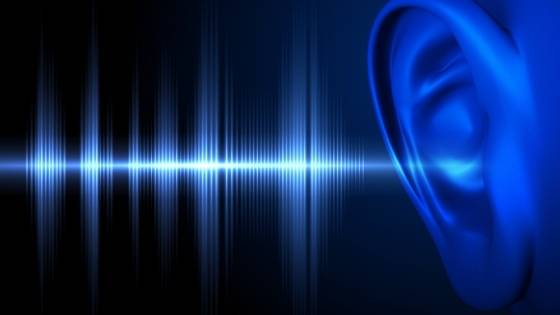Isochronic tones and binaural beats are the two major brainwave entrainments currently available.
They both work using sound frequencies which either slow down the brain activity or speed it up.
However, you might be wondering how they function and which is better.
Besides, you want to discover which is most suitable for you and which tone will provide you with the best results.
Binaural beats and isochronic tones are brain wave entrainment technologies. Binaural beats send two separate frequencies to each ear, and your brain forms a third tone. Whereas isochronic tones use one tone, the beat is turned on and off, creating a pulsing effect.
This article will explore the differences between these two technologies, which in turn will help you decide which is most suitable for your needs and your ears.

Table of Contents
What Are Isochronic Tones And Binaural Beats?
Suppose you are looking to enhance your brain capacity and improve your meditative state.
In that case, you will undoubtedly benefit from the many brain entrainment technologies currently being used by millions of people.
Isochronic tones and binaural beats are two of the most popular and have been scientifically investigated and examined.
It opens up brand-new avenues for people to get their brain wave synced to a more meditative, relaxed, and high-performance state.
These sounds are providing incredible opportunities for people to experience various brain wave states.
It purportedly provides more ease and swiftness than just regular meditation.
This meditation is an assisted approach that helps you achieve a meditative state, which seems elusive and out of reach for most people in the modern world.
But what’s the difference between isochronic tones and binaural beat, and how do they exactly work?
What Are Binaural Beats And How They Work
Binaural beats work by sending different hertz frequencies to the left ear and right ear. When you hear two frequencies simultaneously, the brain efficiently creates a third tone with a mathematical difference. This difference in tones creates the binaural beat in hertz.
For example,
if a 20 Hz frequency is entering the left ear and a 30 Hz is placed in the right ear, the brain will process these frequencies and create a third frequency of 10 Hz.
The brain then produces brain waves at a comparable hertz for both the left ear and right ear.
The term for this phenomenon is frequency following response.
The binaural beat is still the most popular and is the most used.
When it comes to the brain wave entrainment market, for years, it has a firm hold.
The binaural beat is low cost, reliable, and proven to be effective in many studies.
As a result, binaural beats are known to be the preferred form in the market for brainwave entrainment.
Each frequency does something unique to the brain.
The lower the Hz, the slower your brain will vibrate and the faster the Hz, the more active your brain operates.
Each tone or frequency is designed to accompany a specific task or activity. The selected binaural beat can keep your mind focused on that task for more extended periods.
| BINAURAL BEAT | Activity |
| Delta (0Hz-3Hz) | Deep Sleep, ludic dreaming |
| Theta (4Hz-7Hz) | Meditation, visualisation, relaxation |
| Alpha (8Hz-12Hz) | Studying, reading or learning |
| Beta (13Hz- 25Hz) | Deep focused work, memory, retention |
| Gamma (<25Hz) | Peak performance |
Advantages And Disadvantages Of Binaural Beats
| Advantages of Binaural Beats | Disadvantages of Binaural Beats |
| Efficient in numerous studies | Requires headphones for you to feel the full effect |
| Technology has been around for decades | Ear irritation if you fall asleep with earphones in |
| Extremely accessible with hundreds of choices | Plenty of poor-quality audios from amateur producers |
| The beats are affordable | Could be a problem if you have epilepsy |
If your interested in exploring exactly what actives you should do when listening to binaural beats at each frequencies and how to maximise the benefit watch this video on my YouTube channel for free.
What Are Isochronic Tones And How They Work
Isochronic tones only use one tone. The single tone is repeatedly turned on and off, creating a pattern similar to a pulse. The speed will depend on the frequencies utilised. Isochronic tones are a new form of brain wave entrainment when it comes to popularity online, but the theory behind it is similar to binaural beats.
In binaural beats, two tones are utilised, which are played into each ear.
In contrast, the isochronic tone will tend to be jarring to the ears.
As a result, they aren’t exactly easy listening, and this fact turns many people off.
Although this may seem like a minor distinction, the result is you don’t have to utilise headphones.
For some who are into brain entrainment technology, this is exciting.
However, not everyone wants to use headphones, especially if they require focused tones while working or at home.
Therefore, isochronic tones are the ideal choice.
Although, there aren’t many scientific pieces of evidence to back it up.
Isochronic tones are not as efficient for entrainment when set at lower levels, such as the delta and theta range.
This suggests that if you want to get your mind into a trance state for meditation, visualisation or deep sleep, then isochronic tones won’t be as effective as binaural beats.
Nevertheless, users recommend them at higher ranges, such as Alpha or Beta, and say they work on parr with binaural beats in the more active frequency levels.
Moreover, they don’t need to use headphones to get into this state, meaning you can play them in the background and have a deep workflow.
But as mentioned, the sound is something you have to adapt to, and it may not be for everyone.
Another issue is you are required to be near the speakers within 5 meters.
If not, the effects may not be as intense.
You must also consider your situation if you are at work or at home with a noisy family. It is crucial to block outside noise when you are using brainwave entrainment.
So, in the end, you might have to use your headphones to hear it.
Advantages And Disadvantages Of Isochronic Tones
| Advantages of Isochronic Tones | Disadvantages of Isochronic Tones |
| It does not require headphones | The tones must be audible in the recording for ideal entrainment |
| You can listen with a group | Sounds may be jarring compared to binaural beats |
| Some will find the effects intense | Not as effective in the lower frequency ranges such as theta and delta |
| Fresh and innovative sounds. | Not enough peer-reviewed research studies to back up its efficiency |

Which Is Better Binaural Beats Or Isochronic Tones?
In general, binaural beats are better because it has been scientifically studied for years and are readily available. In addition, isochronic tones in the range of Alpha to Gamma are effective without headphones, but binaural beats provide you with a full spectrum of frequencies, making them the most popular option.
Binaural beats are incredible for focusing, meditating, stress relief, and it has a proven track record in these areas.
It is also ideal if you are not bothered about wearing headphones because it helps block out your environment and assists with focusing on the task.
Binaural beats can be used to imprint subliminal messaging into your subconscious mind, and they are easy to create and personalise
Therefore, if I had the choice between binaural beats and isochronic tones, I would select binaural beats.
The flexibility of binaural beats in each frequency and the multiple investigations have demonstrated that binaural beats are incredibly effective at influencing your brain waves.
Do Binaural Beats And Isochronic Tones Really Work?
On average, binaural beats and isochronic tones provide the user with many benefits like sleep, meditation, deep focused work and improved memory. But few scientific studies have completed binaural beats and even less on isochronic tones, but frequent users state they work incredibly well.
After everything is said and done, brainwave entrainment is all about being experimental.
You may come across some sounds and recordings that don’t suit you and others you would be hooked in and can’t live without.
Because of this, you need to know what is best for you and try to discover beats by browsing through catalogues based on your preferences.
It doesn’t matter what type of technology was utilised to create the music.
Some people gravitate towards binaural beats and are completely turned off by the sound of Isochronic tones.
Other people experience a genuine high out of Isochronic tones, especially at the high-frequency ranges.
Perhaps you can try binaural beats for relaxing, focusing, sleeping, as well as pain relief.
For energy and memory enhancement and high-level wakefulness, maybe you can experiment with the frequency range of Isochronic tones. It is all up to you.
If you are just exploring the world of brain entrainment technology, binaural beats are a good entry point.
That being said, with any music, your experience will be dependent on what you hear, so make sure you purchase something that is professionally produced.
Takeaway
The modern world is demanding and hectic, and you need all the help you can get.
Brain entrainment technology has been around the block for years, but it may be a new sound to you.
Explore these amazing frequencies for your ears and experience states of consciousness you’ve never felt before.


